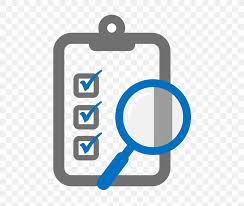15 Proven Strategies for Amplifying Your Content Distribution Plan
In today's digital ecosystem, content creation is merely the genesis of a successful digital marketing endeavor. To truly resonate with your intended audience and make a tangible impact, a meticulously crafted content distribution plan is paramount. A well-defined distribution strategy ensures your content reaches the right individuals, at the optimal moment, and via the most appropriate platforms. This article delves into 15 strategies to construct an effective content distribution plan, offering actionable insights and professional guidance.
Defining Content Distribution
Content distribution refers to the strategic process of sharing and promoting your created content across various channels to reach your target audience. It involves selecting the appropriate platforms, formats, and timing to maximize visibility, engagement, and ultimately, achieve your marketing goals. Effective content distribution transforms valuable content from a hidden asset into a powerful tool for audience connection and business growth.
1. Pinpointing Your Ideal Audience: A Foundation for Success
Before disseminating any content, a thorough understanding of your target audience is essential. Employ audience segmentation techniques, analyzing demographics, psychographics (interests, values, lifestyle), and online behavior to tailor your distribution plan effectively. Consider utilizing buyer personas, which are semi-fictional representations of your ideal customers based on research and data about your existing customers. For example, if your target demographic comprises young adults interested in sustainable living, platforms like Instagram and Pinterest, known for their visually-driven content, may prove more effective than traditional channels. This aligns with the principles of marketing effectiveness, ensuring resources are directed towards the most receptive segments.
2. Leveraging Your Owned Media Channels: Maximizing Internal Resources
Make the most of your owned media channels, including your website, blog, and social media profiles. Implement a content calendar to regularly publish content across these platforms, fostering engagement with your existing audience and attracting new visitors. Cross-promotion of content across multiple owned channels amplifies its visibility and reinforces brand messaging. Furthermore, consider optimizing your website for mobile responsiveness, as described in "Mobile Responsiveness: 15 Ways to Optimize Your Website for Mobile," to ensure a seamless user experience across all devices.
3. Strategic Alliances: Influencer Collaboration for Extended Reach
Collaborating with influencers who resonate with your brand values and target audience can significantly broaden your reach. Identify relevant influencers within your industry and engage in collaborative content creation and distribution efforts. Influencer marketing leverages the trust and credibility these individuals have cultivated with their followers, exposing your content to a wider audience and potentially driving higher engagement rates. Consider implementing a formal influencer marketing strategy, outlining clear objectives, target influencers, and measurement metrics.
4. Guest Blogging: Expanding Your Sphere of Influence
Guest blogging on reputable industry blogs enables you to tap into their established audience. Select high-authority blogs that align with your niche and contribute valuable, insightful content. By strategically incorporating relevant links back to your website or blog, you can direct interested readers to your owned media properties, driving qualified traffic and potentially generating leads. This tactic aligns with the principles of search engine optimization (SEO), as backlinks from authoritative websites can improve your website's search ranking.
5. Email Marketing: Nurturing Leads and Driving Engagement
Harness the power of email marketing to nurture leads and drive traffic to your content. Build a permission-based email list of subscribers who have expressed interest in your content and regularly distribute updates, newsletters, and targeted promotions. Segment your email list based on demographics, interests, and behavior to personalize your messaging and increase engagement rates. Email marketing, when executed effectively, can be a highly cost-effective channel for content distribution and lead generation.
6. Amplifying Reach: Social Media Advertising
Social media platforms like Facebook, Instagram, and LinkedIn offer robust advertising capabilities to amplify your content's reach. Utilize precise targeting options to reach your desired audience based on demographics, interests, behaviors, and even custom audiences. A/B test different ad creatives and targeting parameters to optimize your campaigns for maximum impact. Investing in social media advertising can significantly increase your content's visibility, drive traffic to your website, and generate leads.
7. Search Engine Optimization (SEO): Enhancing Organic Visibility
Optimize your content for search engines to improve its organic visibility. Conduct thorough keyword research to identify relevant search terms that your target audience is using. Optimize meta tags, headings, and body content with these keywords. Create high-quality, valuable content that addresses the needs and interests of your target audience. Implementing effective SEO practices can improve your content's ranking in search engine results pages (SERPs), driving more organic traffic to your website.
8. Content Syndication: Expanding Distribution Networks
Partner with reputable content syndication platforms, such as Outbrain or Taboola, to distribute your content across a network of high-traffic websites. Content syndication allows you to reach a broader audience and increase brand exposure by having your content appear on websites that your target audience frequents. This approach can be particularly effective for driving traffic to your website and generating leads.
9. Content Repurposing: Maximizing Content Value
Extend the lifespan of your content by repurposing it into different formats. Transform a blog post into a visually engaging infographic, create a video summarizing a whitepaper, or convert a webinar into a series of short social media clips. Repurposing allows you to reach diverse audience segments who prefer different content consumption formats and cater to varying learning styles. This strategy maximizes the return on investment (ROI) of your content creation efforts.
10. Influencer Takeovers: Leveraging External Expertise
Grant influencers temporary control of your social media accounts or blog to create and share content on your behalf. This strategy introduces a fresh perspective and exposes your brand to the influencer's established and engaged following. Clearly define the scope and objectives of the takeover, provide the influencer with relevant guidelines and resources, and promote the takeover across your own channels to maximize its impact.
11. Strategic Partnerships: Collaborative Content Initiatives
Cultivate strategic partnerships with industry-related businesses or organizations. Co-create content or cross-promote each other's content to leverage each other's audience and gain exposure to new potential customers. Joint webinars, co-authored ebooks, and collaborative blog posts are examples of how you can partner with other organizations to create valuable content and expand your reach. When considering partnerships, refer to "15 Proven Ways to Build Trust Through Transparent Communication" for guidance on establishing strong, reliable relationships.
12. Engaging Communities: Online Forums and Groups
Actively participate in relevant online communities and forums where your target audience congregates. Engage in discussions, provide valuable insights, and share your content when appropriate. By establishing yourself as a knowledgeable and helpful resource within these communities, you can drive targeted traffic to your content and build brand awareness. Adhere to the community guidelines and avoid self-promotion, focusing instead on providing genuine value.
13. Influencer Outreach: Seeking Endorsements and Amplification
Proactively reach out to industry influencers and request them to review or mention your content. Personalize your outreach efforts by demonstrating that you have researched their work and understand their audience. Offer them exclusive access to your content or provide them with incentives to encourage their participation. Influencer endorsements can significantly enhance your content's credibility and visibility.
14. Employee Advocacy: Unleashing Internal Brand Ambassadors
Encourage your employees to share your content on their personal social media profiles. Employee advocacy extends your content's reach, adds a human touch to your brand, and increases authenticity and trust. Provide your employees with training and resources to help them effectively share your content and represent your brand. Recognize and reward employees who actively participate in employee advocacy initiatives.
15. Data-Driven Optimization: Analyzing and Refining
Continuously track the performance of your content distribution efforts and analyze the data. Identify which channels and strategies are driving the most engagement, traffic, and leads. Use web analytics tools, social media analytics dashboards, and marketing automation platforms to gather data and gain insights. Adjust your content distribution plan based on real-time data to optimize your efforts and maximize your ROI.
Conclusion and Recommendations
A well-executed content distribution plan is the cornerstone of a successful digital marketing strategy. By implementing these 15 strategies, organizations can maximize the reach, engagement, and impact of their content. Effective content distribution not only drives traffic and generates leads but also builds brand awareness, fosters customer loyalty, and establishes thought leadership. It’s imperative to embrace a data-driven approach, continuously monitoring performance and adapting strategies to align with evolving audience preferences and digital trends. Further research could explore the effectiveness of AI-powered content distribution tools and the impact of personalized content experiences on audience engagement. Exploring strategies detailed in articles like "Customer Journey Mapping: Optimize Sales and Marketing Performance" can also provide valuable insights into aligning content distribution with customer needs.
Ultimately, a commitment to strategic planning, consistent execution, and continuous optimization is essential for achieving sustainable success in the dynamic landscape of content marketing. As you refine your distribution strategies, remember the importance of "The Vulnerability Advantage: Emotional Intelligence for Success" and how understanding your audience on a deeper level can transform your approach to content distribution.
Related Articles
- Customer Journey Mapping: Optimize Sales and Marketing Performance
- The Vulnerability Advantage: Emotional Intelligence for Success
- Mobile Responsiveness: 15 Ways to Optimize Your Website for Mobile
- 15 Proven Ways to Build Trust Through Transparent Communication
- Diversifying Revenue Streams: Proven Strategies for Business Growth
Reader Pool:
In what ways do you believe the integration of emerging technologies like AI and machine learning will revolutionize content distribution strategies in the next 5 years?
```





